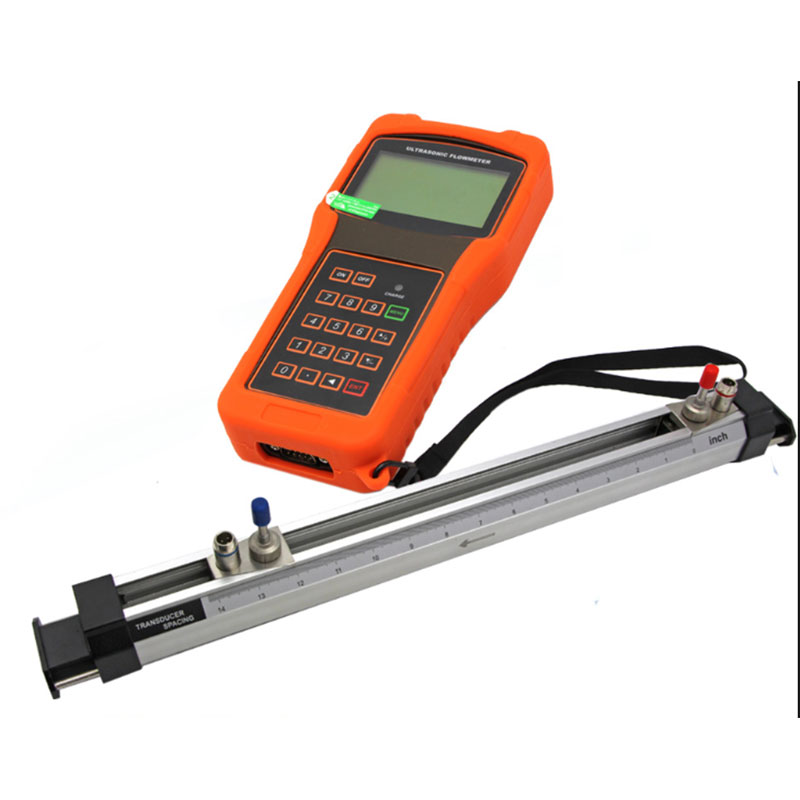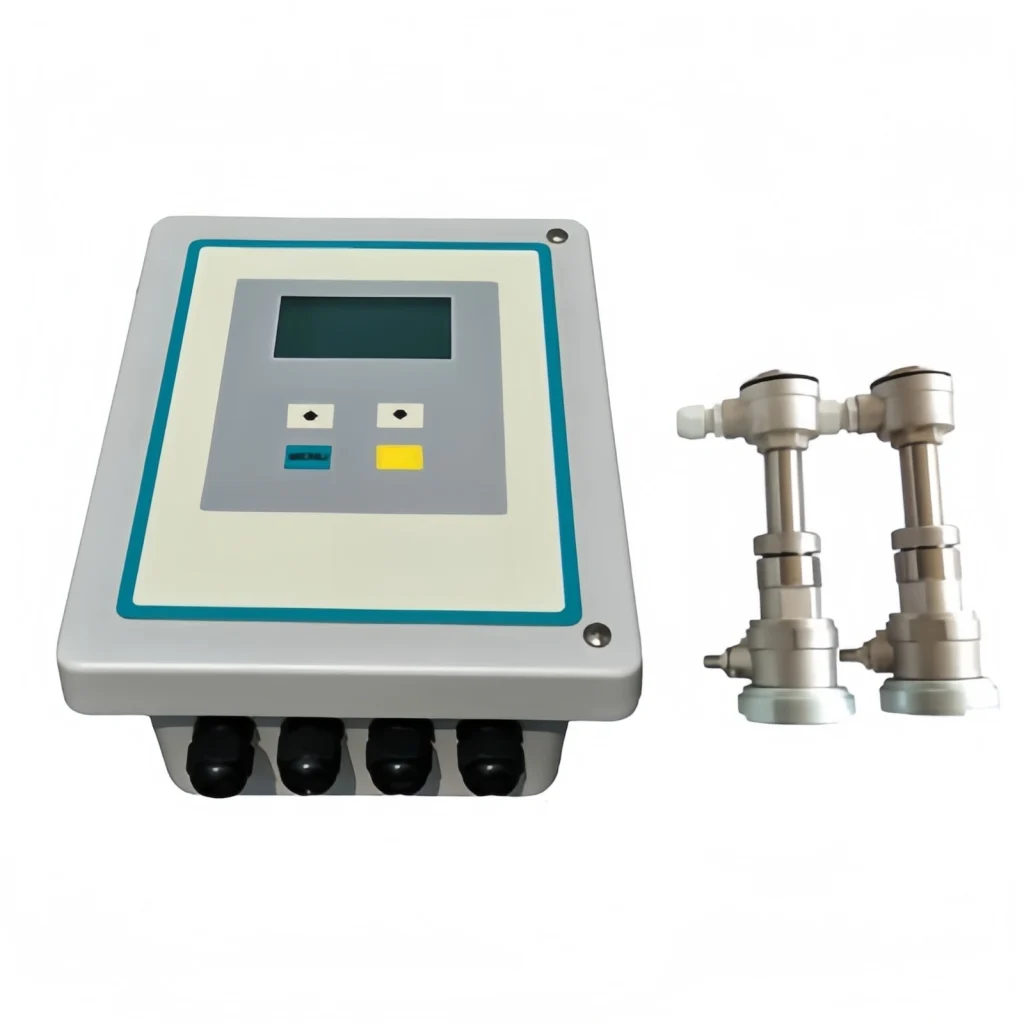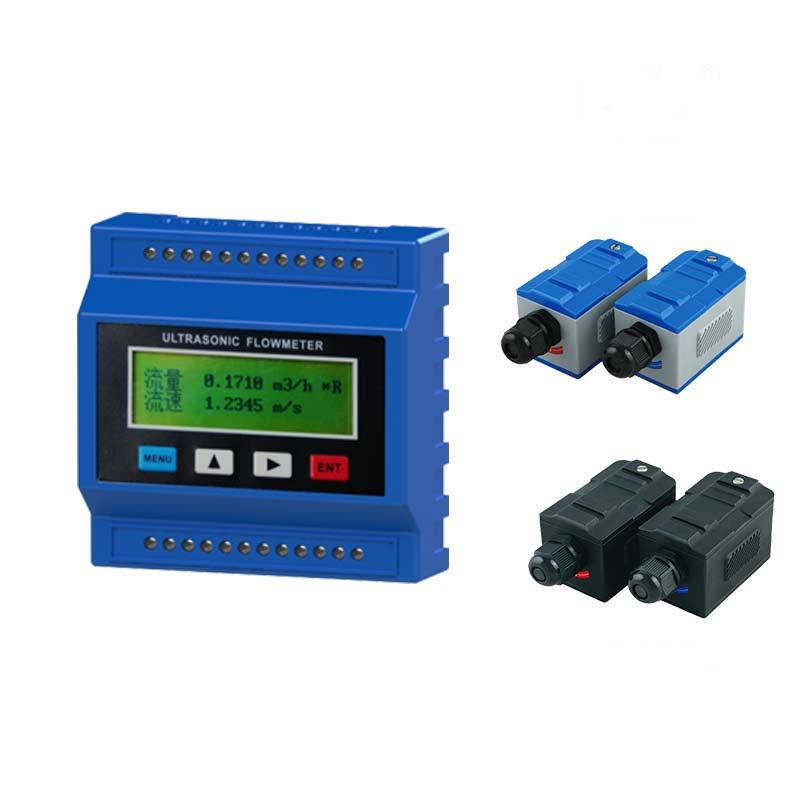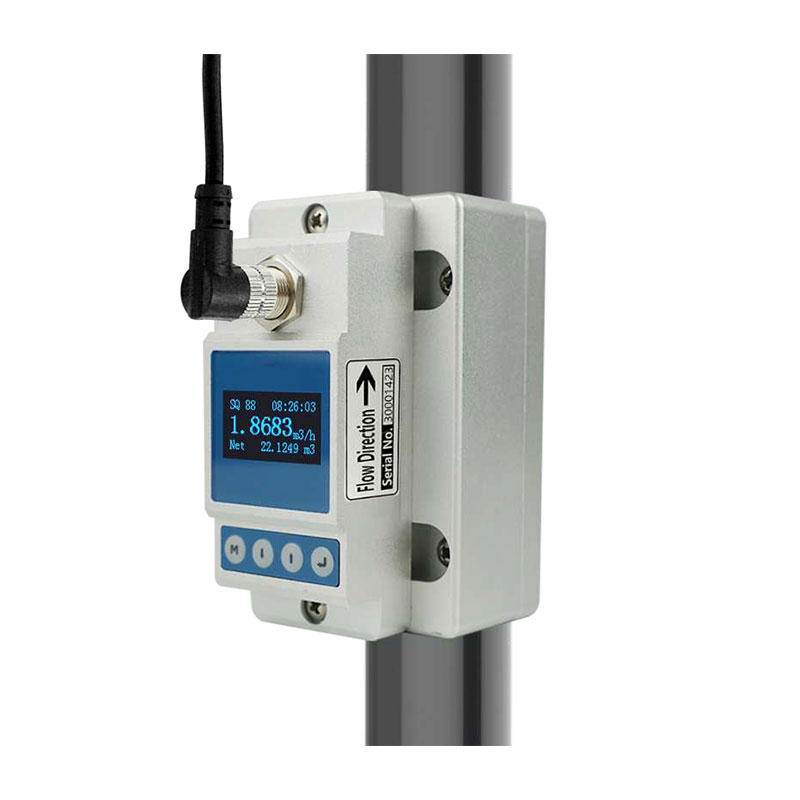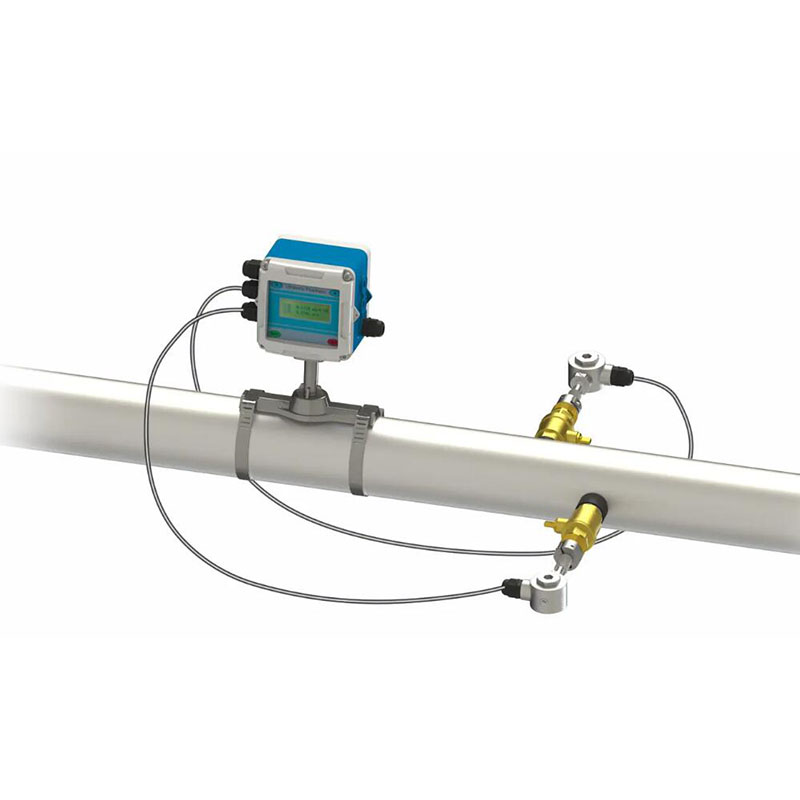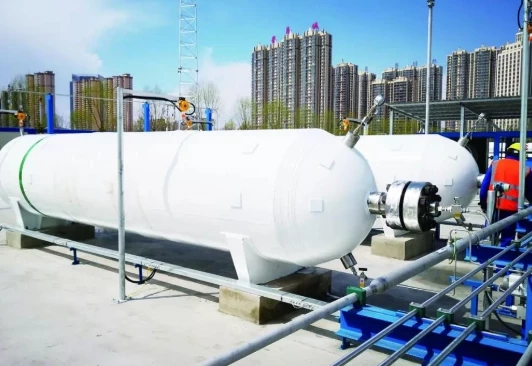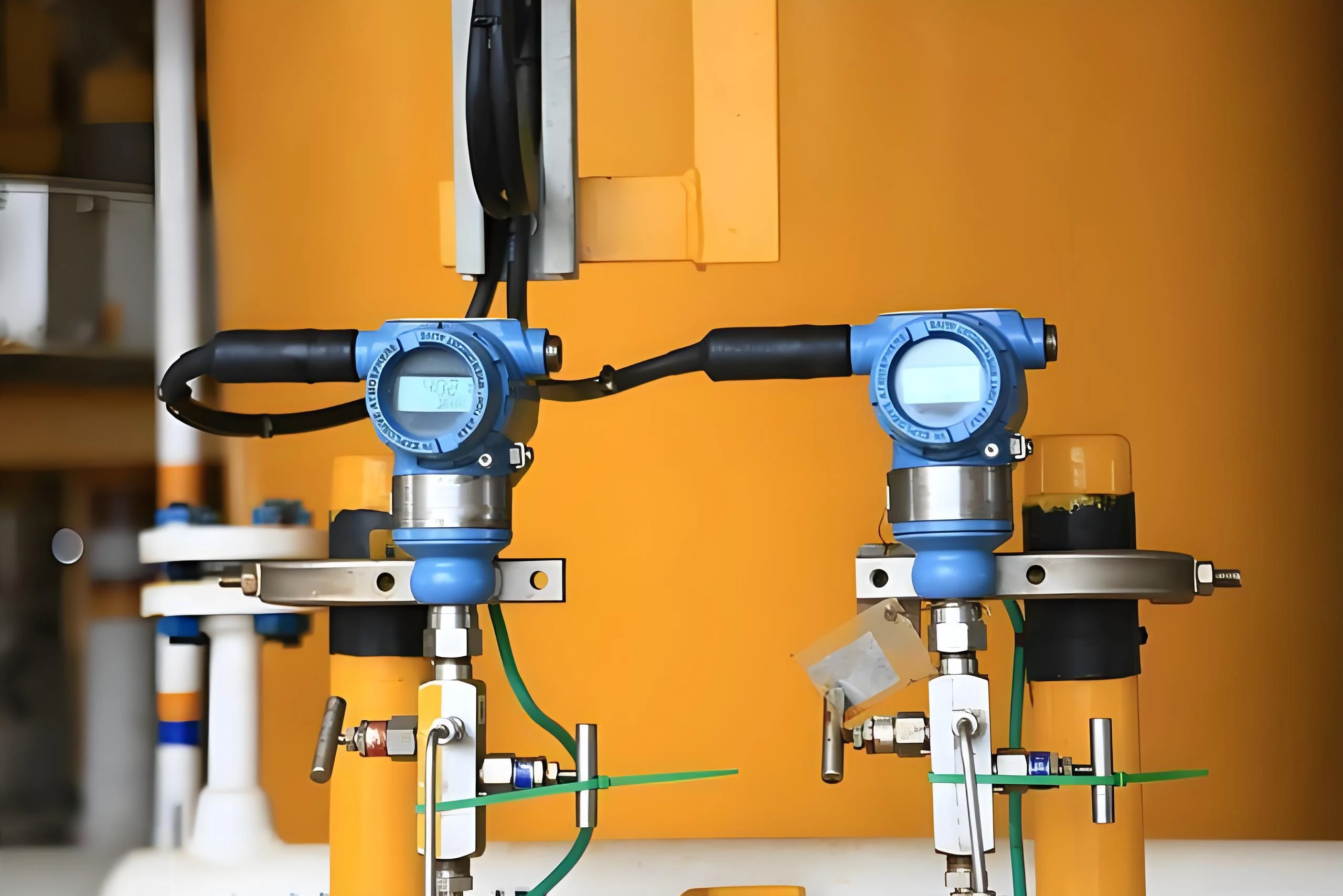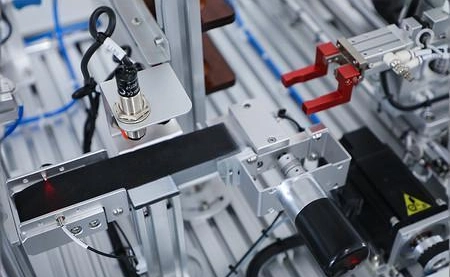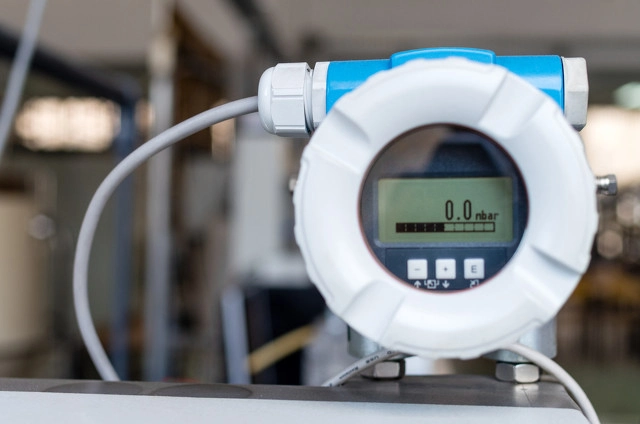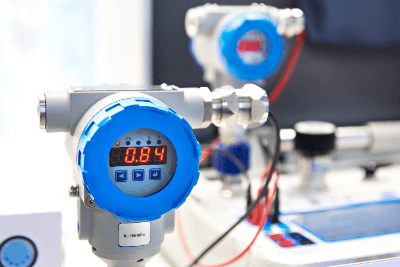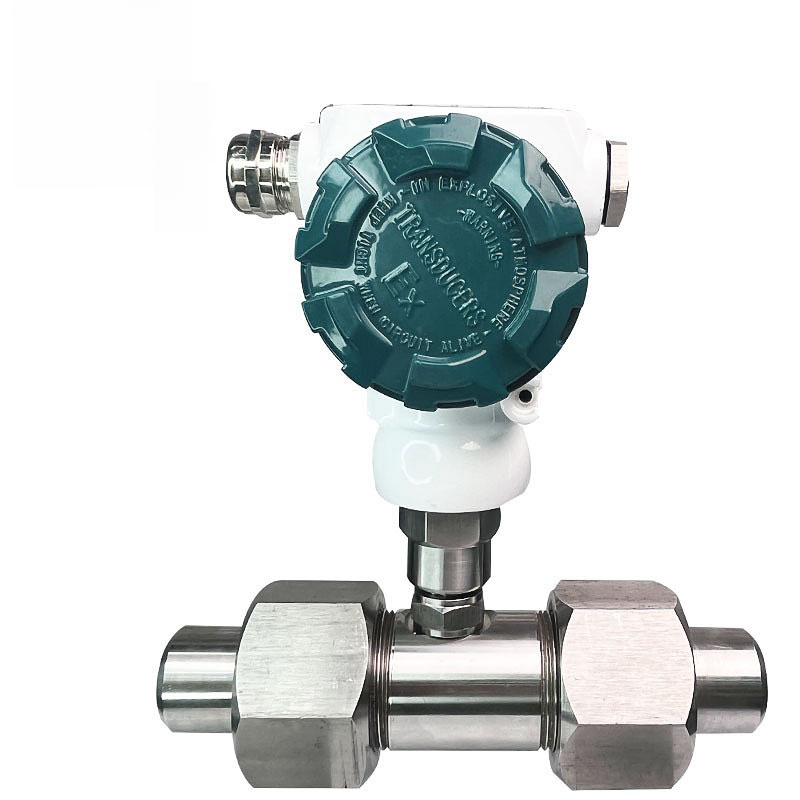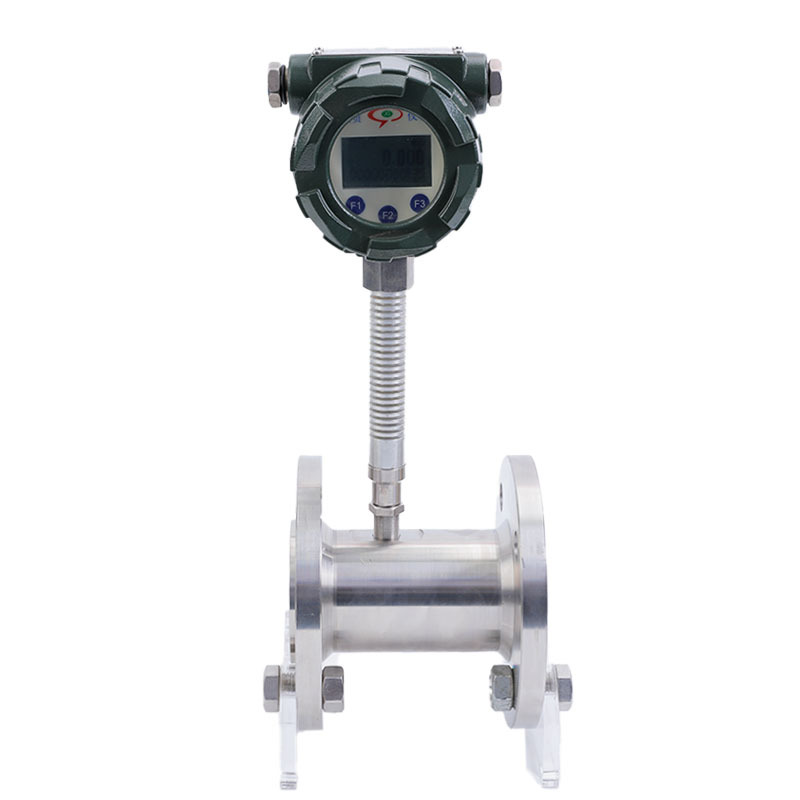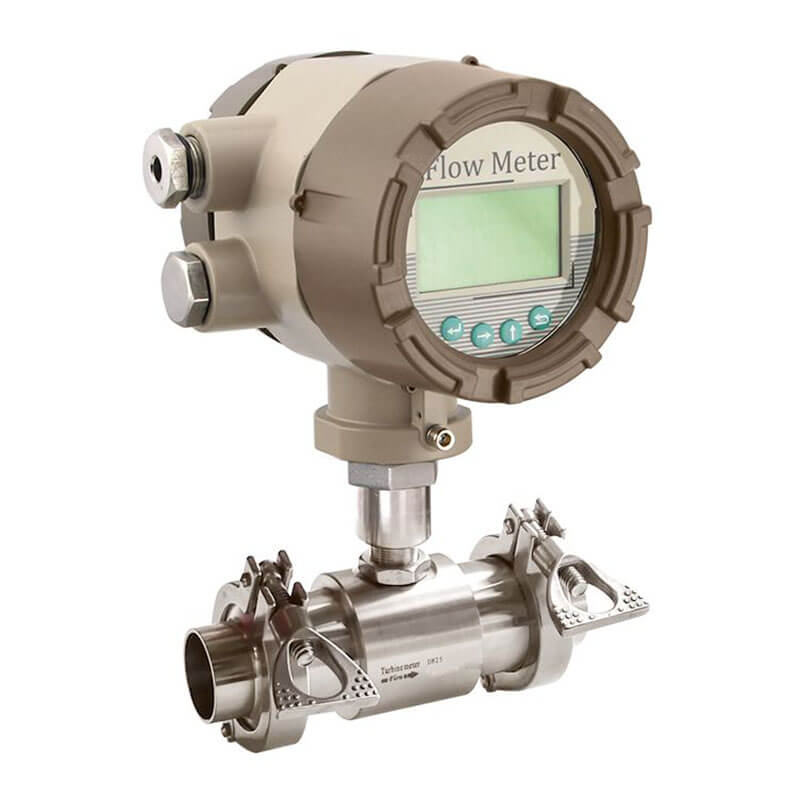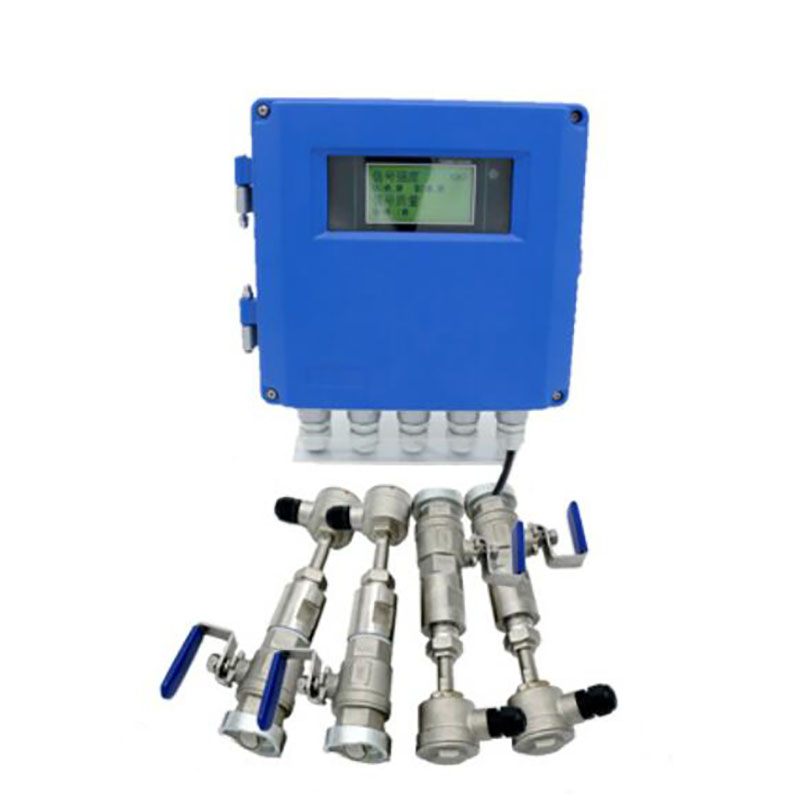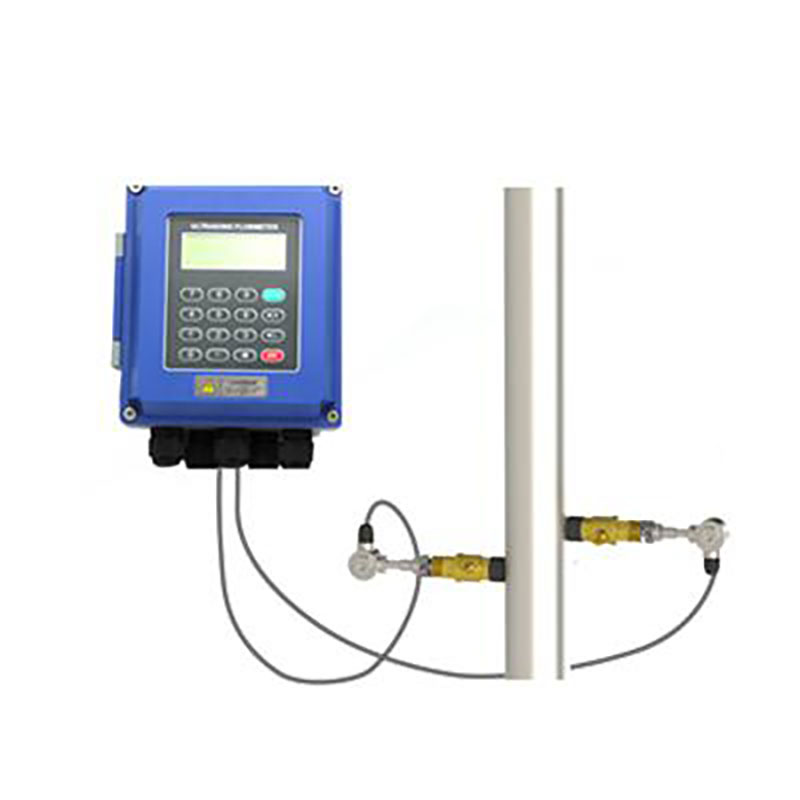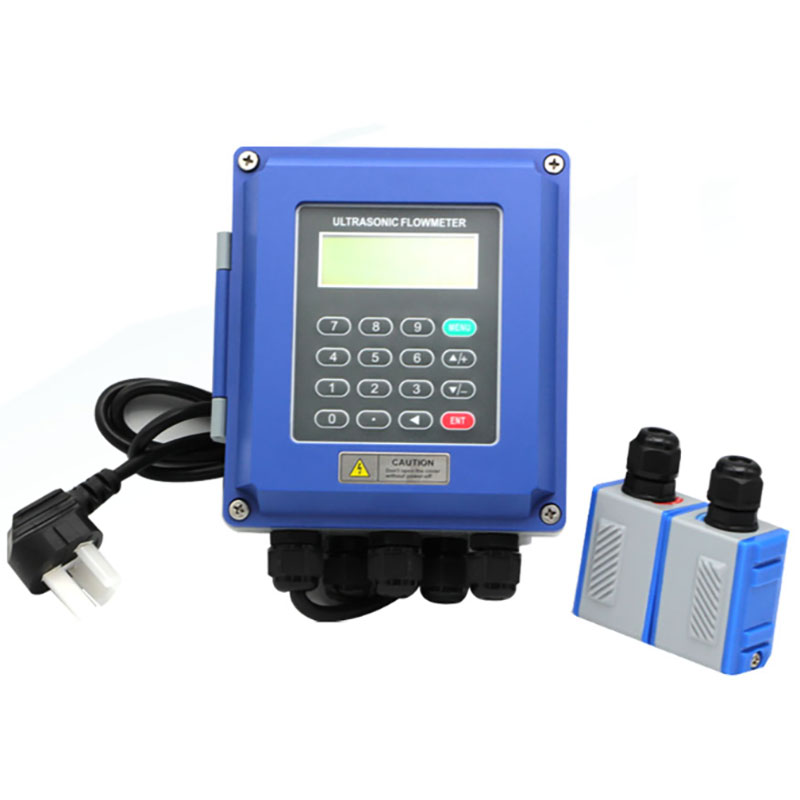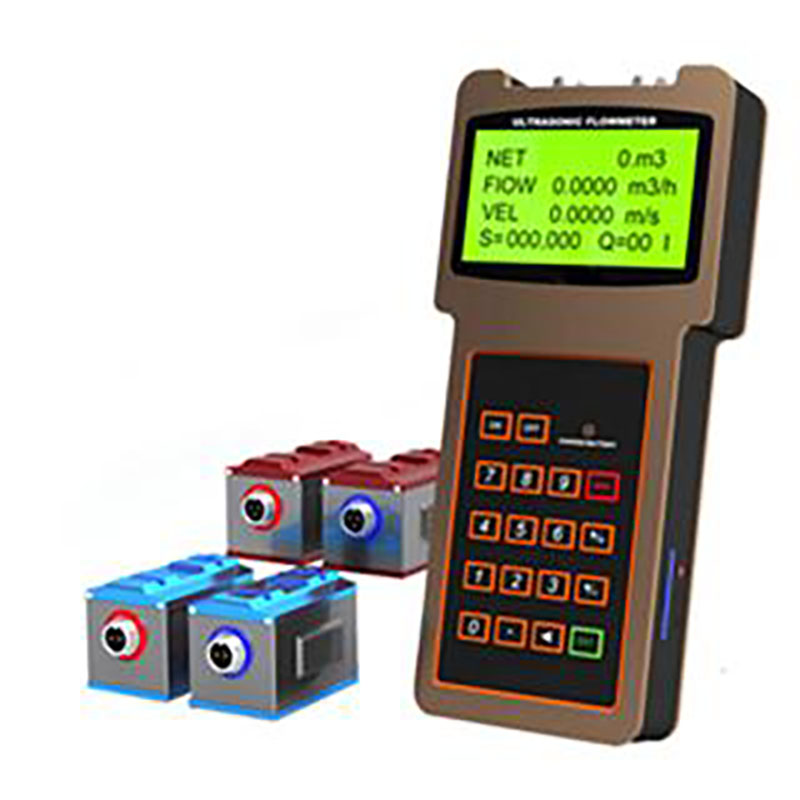Ultrasonic flow meter is a common tool for measuring flow. It has high accuracy and non-contact design, which makes it unaffected by the medium. This article will introduce the ultrasonic flow meter in detail.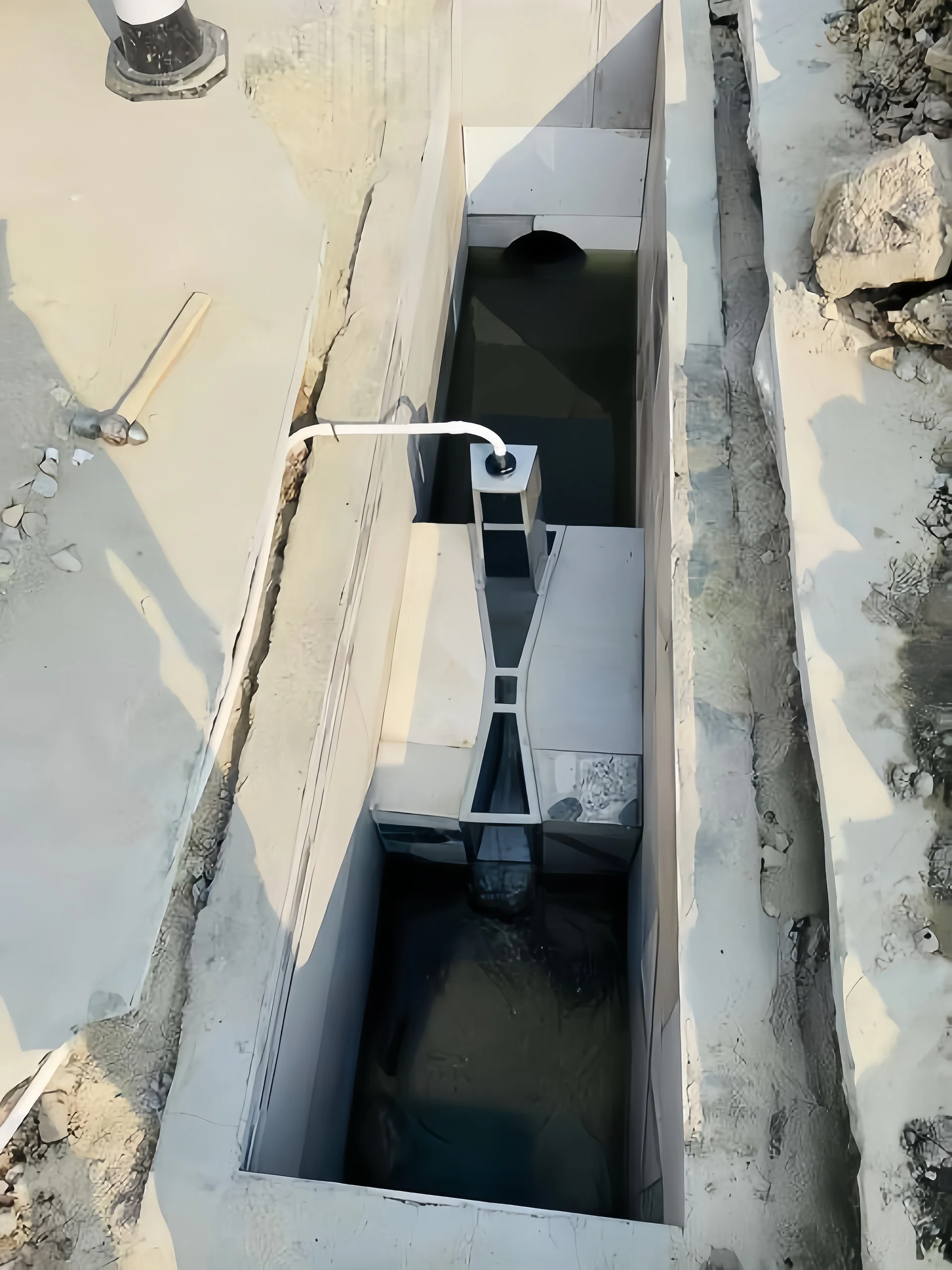
What is an Ultrasonic Flow Meter?
An ultrasonic flow meter is a device that utilizes the velocity difference principle to measure the flow of fluid in a pipe.
It can be divided into external clamp type, pipe segment type and portable type. If divided by the host structure, it can be wall-mounted, portable, modular, etc.
It is often used in combination with digital signal processing technology, multi-pulse technology, error correction technology, etc. It can achieve the purpose of adapting to the environment and enhancing its reliability.
Advantages of an Ultrasonic Flow Meter:
- Non-contact measurement
- Does not destroy the flow state of the fluid
- No pressure loss
- Easy to install
- No need to cut off the pipeline
- Applicable to a variety of pipe diameters
- High accuracy
- Not affected by the physical properties of the fluid
- Versatility
- Can measure a variety of fluids
- Can achieve bidirectional measurement
- Corrosion resistance

Sino-Inst's Featured Ultrasonic Flow Meter
How does an Ultrasonic Flow Meter Work?
Basic measurement principle:
An Ultrasonic flow meter measures the flow velocity and flow rate of the fluid. It is based on the principle of the propagation speed of ultrasonic waves in the flowing medium.
The difference between the propagation speed of ultrasonic waves in a stationary medium and the propagation speed in a flowing medium. It is directly related to the average flow velocity of the fluid.
Main methods:
Ultrasonic flow meters have many types and working principles. It mainly includes the propagation velocity difference method (including direct time difference method, time difference method, phase difference method and frequency difference method), beam deviation method, Doppler method, cross-correlation method, spatial filter method and noise method.
Specific methods:
Propagation velocity difference method:
The flow velocity and flow rate of the fluid are calculated by measuring the propagation time difference of ultrasonic waves in downstream and upstream.
It mainly uses two sound wave transmitters and receivers to measure the propagation time of sound waves in the downstream and upstream respectively. The flow velocity is calculated by the relationship between the time difference and the flow velocity.
Doppler method:
Use the Doppler effect. The flow velocity is calculated by measuring the frequency difference caused by the movement of solid particles when the ultrasonic wave propagates in the fluid. This method is suitable for measuring fluids containing solid particles.
Cross-correlation method:
By comparing the correlation of ultrasonic waves when propagating in the fluid, the position change of particles or bubbles is evaluated. And then the flow velocity is calculated. This method is similar to an ultrasonic camera. It can capture the speed of tiny particles in the fluid and achieve high-precision measurement.
By measuring the flow velocity and pipeline data, the flow rate can be calculated.
Flow calculation formula:
Detailed explanation of the pipeline flow calculation formula
Basic formula.
Flow (Q) = pipe cross-sectional area (A) × flow velocity (V)
Cross-sectional area calculation: A = π×(D/2)² (π is taken as 3.14, D is the inner diameter of the pipe, and the unit must be unified in meters).
Unit description:
Flow (Q): cubic meters/hour (m³/h).
Flow velocity (V): meters/second (m/s).
Inner diameter (D): millimeters (mm), which must be converted to meters (m) when calculating. 1
Formula derivation and examples.
If the flow velocity unit is m/s, it needs to be multiplied by 3600 to convert to m/h (because 1 hour = 3600 seconds), and the final flow formula is:
Q = 3600 × A × V
Example: Φ110mm×2.7mm pipe(Φ110mm is the outer diameter of the pipe, 2.7mm is the wall thickness of the pipe), flow rate 1m/s:
Calculated inner diameter: 110mm – (2.7mm×2) = 104.6mm = 0.1046m.
Cross-sectional area: A = 3.14×(0.1046/2)² ≈ 0.0086m².
Flow rate: Q = 0.0086 × 3600 ×1 ≈ 30.96m³/h.
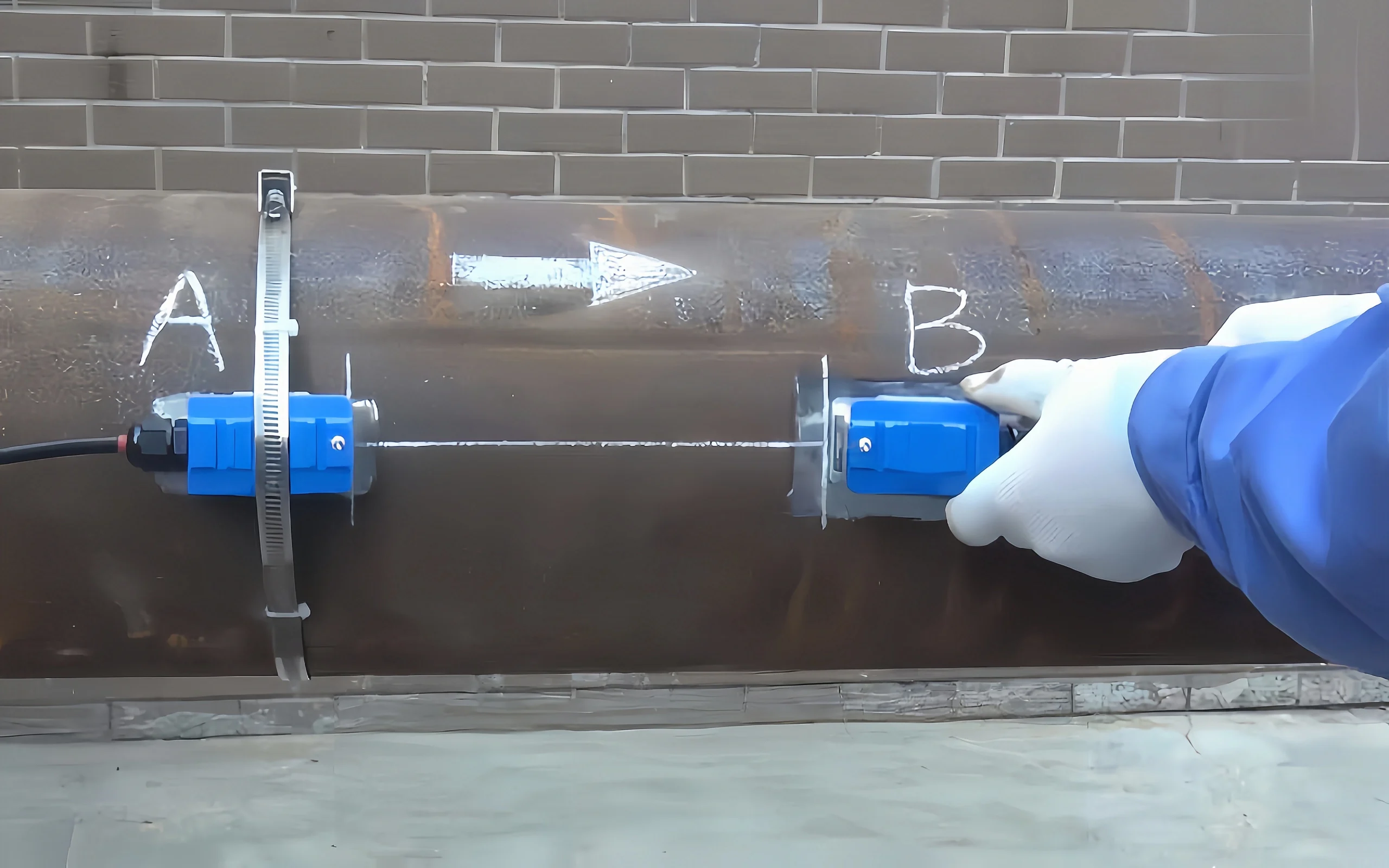
How to Use an Ultrasonic Flow Meter?
1. Installation:
The ultrasonic flow meter should be installed on the fluid pipeline to ensure the unidirectional flow of the fluid. The inner diameter and shape of the pipe should meet the instrument standard requirements. Avoid the occurrence of bubbles and impurities that interfere with the signal.
2. Set parameters:
Set the parameters of the ultrasonic flow meter according to the actual working conditions and needs. Including pipe diameter, flow unit, measurement range, etc. It needs to be calibrated according to the actual situation.
3. Power on:
The ultrasonic flow meter needs to be powered on before it can work properly. Usually there will be a corresponding display or indicator light. It can display the flow value and curve in real-time, as well as alarm information, etc.
4. Regular calibration:
The ultrasonic flow meter needs to be calibrated regularly. Ensure measurement accuracy and reliability.
5. Clean the pipeline:
The pipe should be cleaned regularly. Avoid factors such as dirt and sediment that affect the measurement. Professional cleaning equipment and methods should be used. Chemical reagents that damage pipelines and instruments or overly rough brushes, etc., should not be used.
6. Avoid interference:
The ultrasonic flow meter needs to avoid electromagnetic, voltage and other interference. Professional equipment. Such as isolators and filters can be used for protection.
7. Safe use:
When using an ultrasonic flow meter, users need to operate in strict accordance with the product manual. Do not disassemble or debug the instrument at will. Avoid safety accidents.
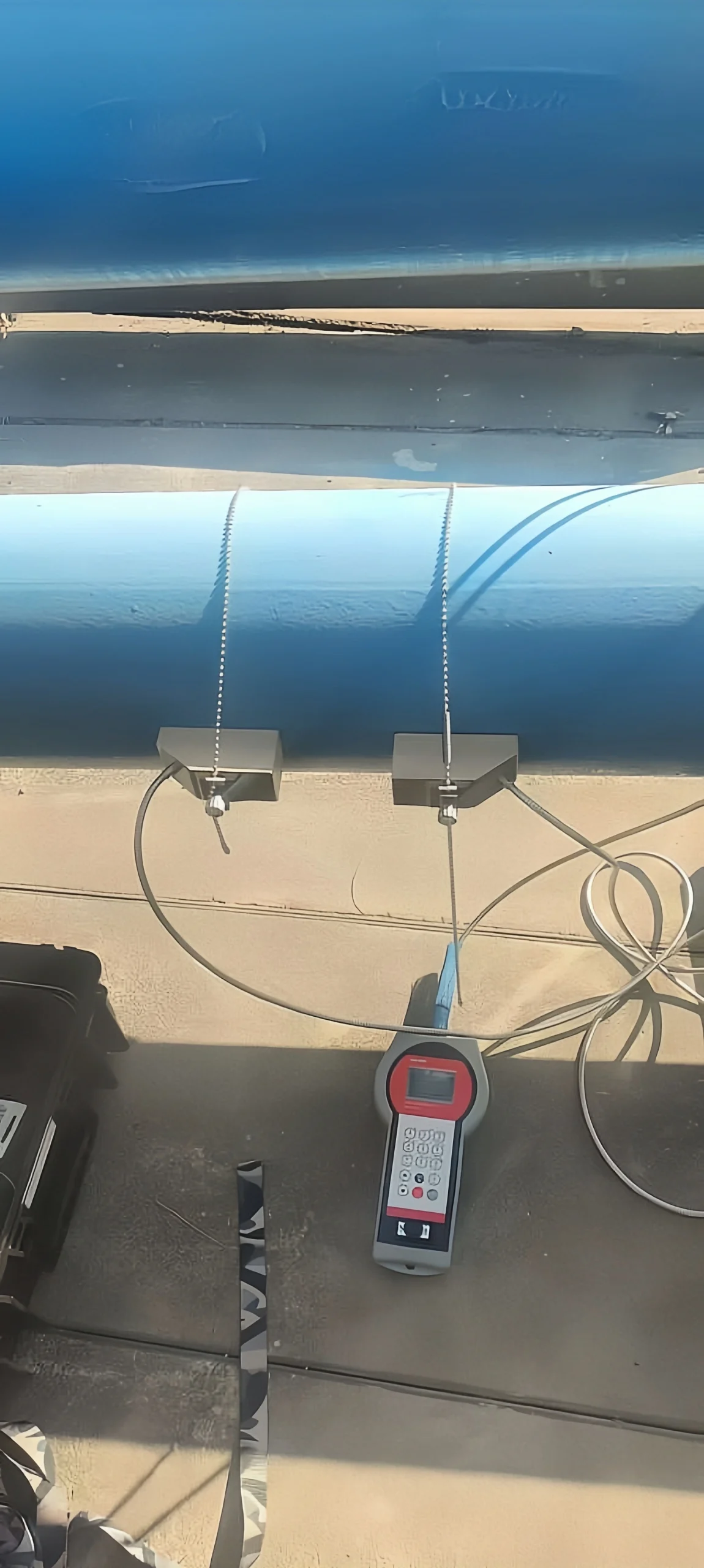
How to Calibrate an Ultrasonic Flow Meter?
I. Standard meter method
Principle:
It is to install the calibrated ultrasonic flow meter in series with a standard flowmeter. (such as electromagnetic flow meter, mass flow meter, etc.) It is known to have high accuracy and good stability on the same pipeline. Under the same working conditions, compare the measurement results of the two flow meters to determine the error of the calibrated flow meter.
II. Volumetric method
Principle:
The volumetric method is to determine the accuracy of the ultrasonic flow meter by measuring the volume of the fluid flowing through the ultrasonic flow meter in a certain period. And comparing it with a container of known volume. This method is suitable for the calibration of small liquid flows.
III. Weighing method
Principle:
The weighing method is to determine the accuracy of the ultrasonic flow meter by measuring the weight of the fluid flowing through the ultrasonic flow meter in a certain period of time . And compare it with a standard weight of known weight. This method is suitable for the calibration of large liquid flows.
Principle:
The on-site comparison method is to compare the calibrated ultrasonic flow meter. A flow meter has been running on site. And calibrated to determine the accuracy of the calibrated flow meter. This method is suitable for the calibration of ultrasonic flowmeters that cannot be disassembled. Or when calibration is required under actual working conditions.
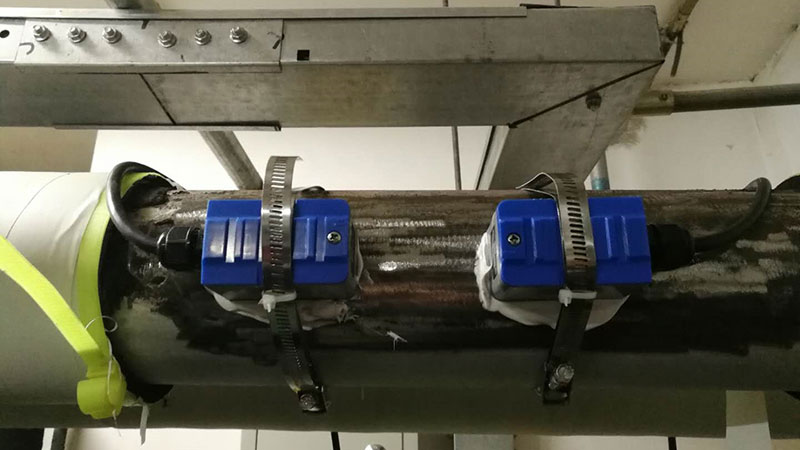
What are the Applications of an Ultrasonic Flow Meter?
Ultrasonic flow meters are widely used in many fields.
Environmental protection field:
It is often used for municipal sewage measurement and factory sewage discharge measurement. By real-time monitoring of sewage flow, it provides key data for the operation and management of sewage treatment plants.
Oil field:
It can be used for crude oil production flow measurement, cementing mud flow measurement, and oilfield oily sewage flow measurement. And oil well injection flow measurement.
Water field:
It is mainly used for raw water measurement in rivers, reservoirs, and tap water flow measurements. By accurately measuring the raw water volume and tap water supply, ultrasonic flowmeters provide strong support for water resource allocation.
Petrochemical industry:
The ultrasonic flow meter plays a vital role. It can not only be used for real-time monitoring of the petrochemical product process flow. But also accurately measure the flow of industrial circulating water.
Pharmaceutical field:
Ultrasonic flow meters are used to measure the flow of chemicals and monitor water consumption in the production process.
In power plants and thermal power plants, it is also used for production water consumption measurement, cooling circulation water flow measurement and generator set coil cooling water flow measurement.
In addition, in many fields such as metallurgy, mining, aluminum plants and papermaking, ultrasonic flow meters provide strong support for production management.
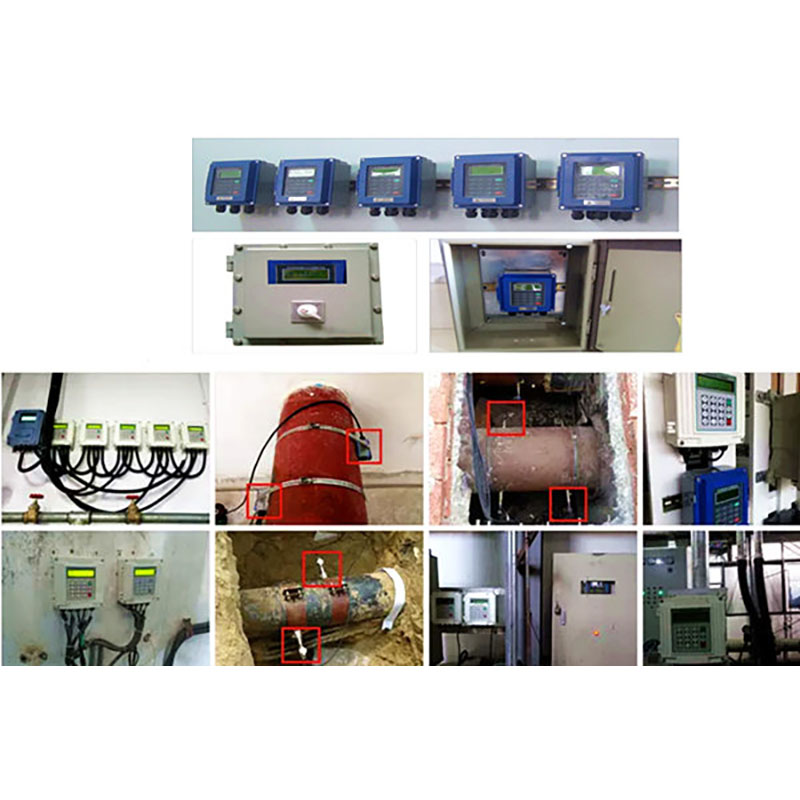
How to Select a Flow Meter?
Flow meter selection in different situations:
1. Turbid liquid media such as sewage and pulp. Choose an ultrasonic flow meter and an intelligent electromagnetic flow meter. But when choosing a flow meter, consider that the liquid does not contain much air or bubbles.
2. Oil media such as petroleum and diesel. Choose turbine flow meters or gear flow meters.
3. Mortar, electric powder slurry and other media with high concentration and high solid particle content. Select an electromagnetic flow meter.
4. Medium with a large flow of tap water. Select the appropriate type as an intelligent electromagnetic flow meter or an ultrasonic flow meter. Others, such as vortex flow meter and orifice flow meter, are also acceptable.
5. Gas medium. Select an ultrasonic gas flow meter and a vortex flow meter.
6. Medium with low conductivity, such as pure water and demineralized water. Choosing an ultrasonic flow meter is very suitable for measuring such fluids.
7. Strongly corrosive media such as acid and alkali. Choose: 1. Electromagnetic flow meter with acid and alkali lining. 2. External clamp ultrasonic flow meter.
Ultrasonic Flow Meter Trouble Shooting.
Fault phenomenon: the large fluctuation of the instantaneous flow meter.
Fault cause: large fluctuation of signal strength; large fluctuation of the measured fluid itself.
Countermeasures: Adjust the probe position, improve the signal strength, and ensure stable signal strength. If the fluid itself fluctuates greatly, the position is not good. And reselect the point. Ensure the working condition requirements of 10D in front and 5D in the back.
Fault phenomenon: Low signal of the external clamp flow meter
Fault cause: Too large pipe diameter or serious scaling of the pipe, or incorrect installation method.
Countermeasures: Use a plug-in probe for pipes with too large pipe diameter and serious scaling. Reselect the installation method.
Fault phenomenon: The signal of the plug-in probe decreases after being used for a period of time.
Fault cause: The probe may be offset or the scale on the probe surface is thick.
Countermeasures: Re-adjust the probe position and clean the probe emission surface.
Fault phenomenon: No display after power on
Fault cause: The power supply attribute does not correspond to the rated value of the instrument or the fuse is blown.
Countermeasures: Check whether the power supply attribute corresponds to the rated value of the instrument and whether the fuse is blown. If there is no problem above, notify the manufacturer’s professional personnel to handle it.
Fault phenomenon: After powering on, the instrument only has a backlight, and no characters are displayed
Fault cause: Generally, the program is lost.
Countermeasures: Notify the manufacturer’s professional personnel to handle it.
Fault phenomenon: The instrument cannot be used under strong interference on-site
Fault cause: The power supply fluctuates in a large range. Or there is a frequency converter. Or a strong magnetic field interference around. Or the grounding wire is incorrect.
Countermeasures: Provide a stable power supply to the instrument. Or install the instrument away from the frequency converter. Or set the grounding wire in a standardized manner.
Can an Ultrasonic Flow Meter Measure Air Flow?
The ultrasonic flow meter can measure gas flow. It uses an ultrasonic sensor to emit an ultrasonic beam. It is received by the receiver after passing through the fluid, so as to calculate the flow rate and infer the flow rate.
When measuring gas flow, temperature and pressure corrections are usually required to ensure measurement accuracy. In addition, the measurement of gas by ultrasonic flow meters is not affected by conductivity, pressure, temperature or viscosity.
In recent years, technological advances have enabled ultrasonic flow meters to effectively measure gas flow. Including gas under conditions of dirt, corrosion, wet saturation, etc.
As can be seen from the text, the flow measurement accuracy of ultrasonic flow meters is almost unaffected by parameters. such as temperature, pressure, viscosity, and density of the measured fluid. It can be installed and can work without stopping the pipe and running. It has high-cost performance. And it has become the preferred product in many industries.
Sino-Inst is a flow meter supplier from China. We provide a wide variety of flow meters. If you have any questions about flow measurement, please feel free to contact us. We will provide you with free technical guidance.

